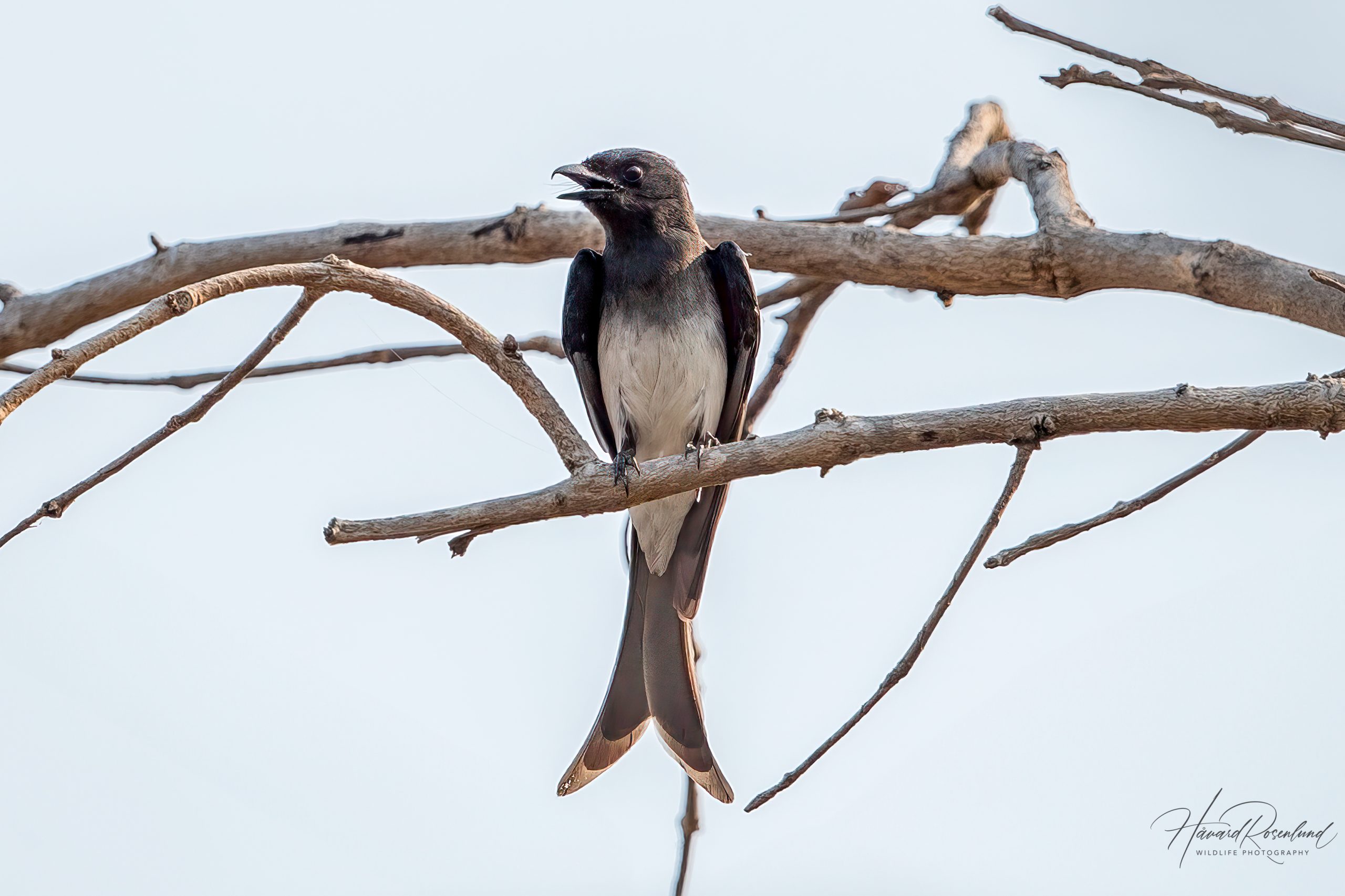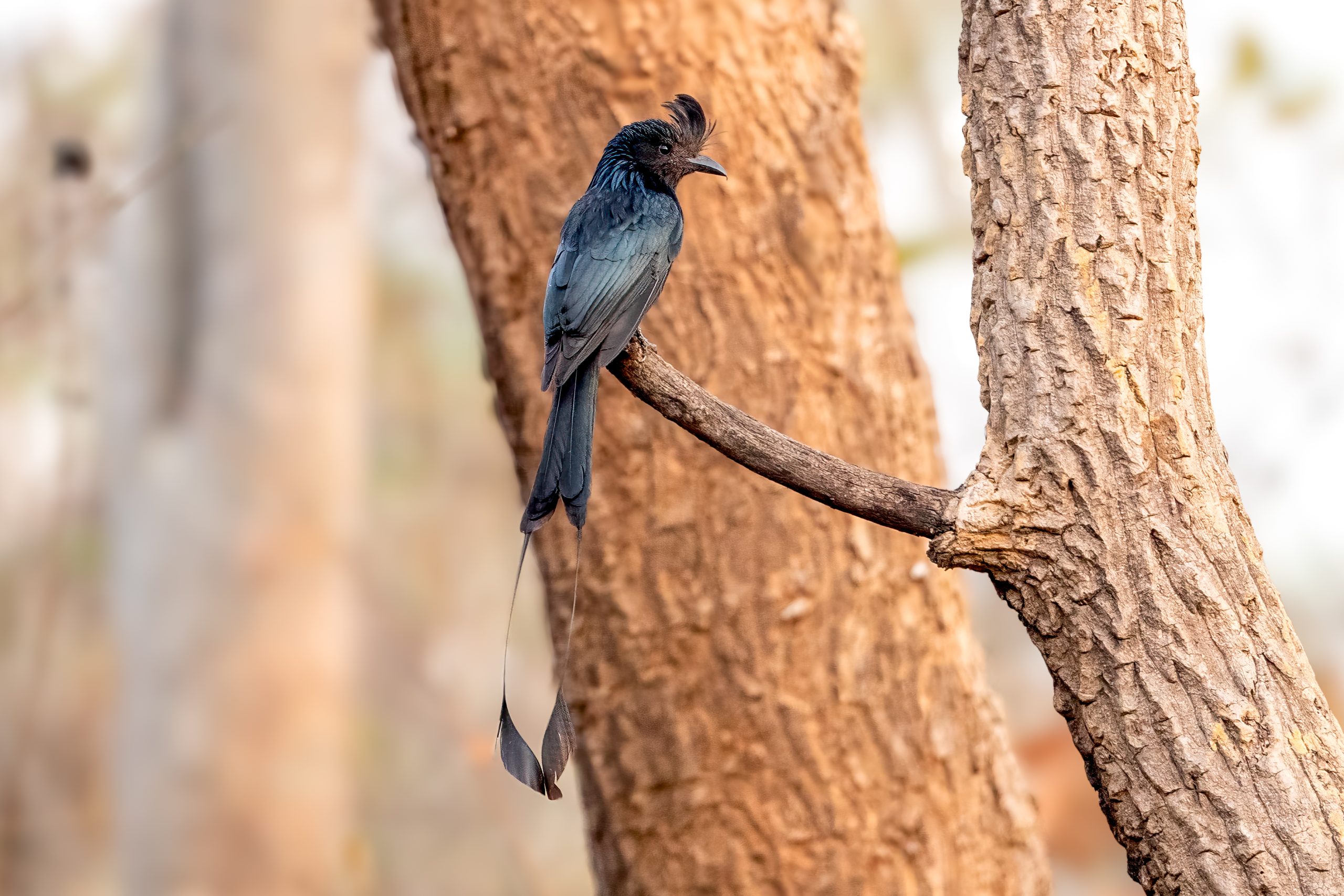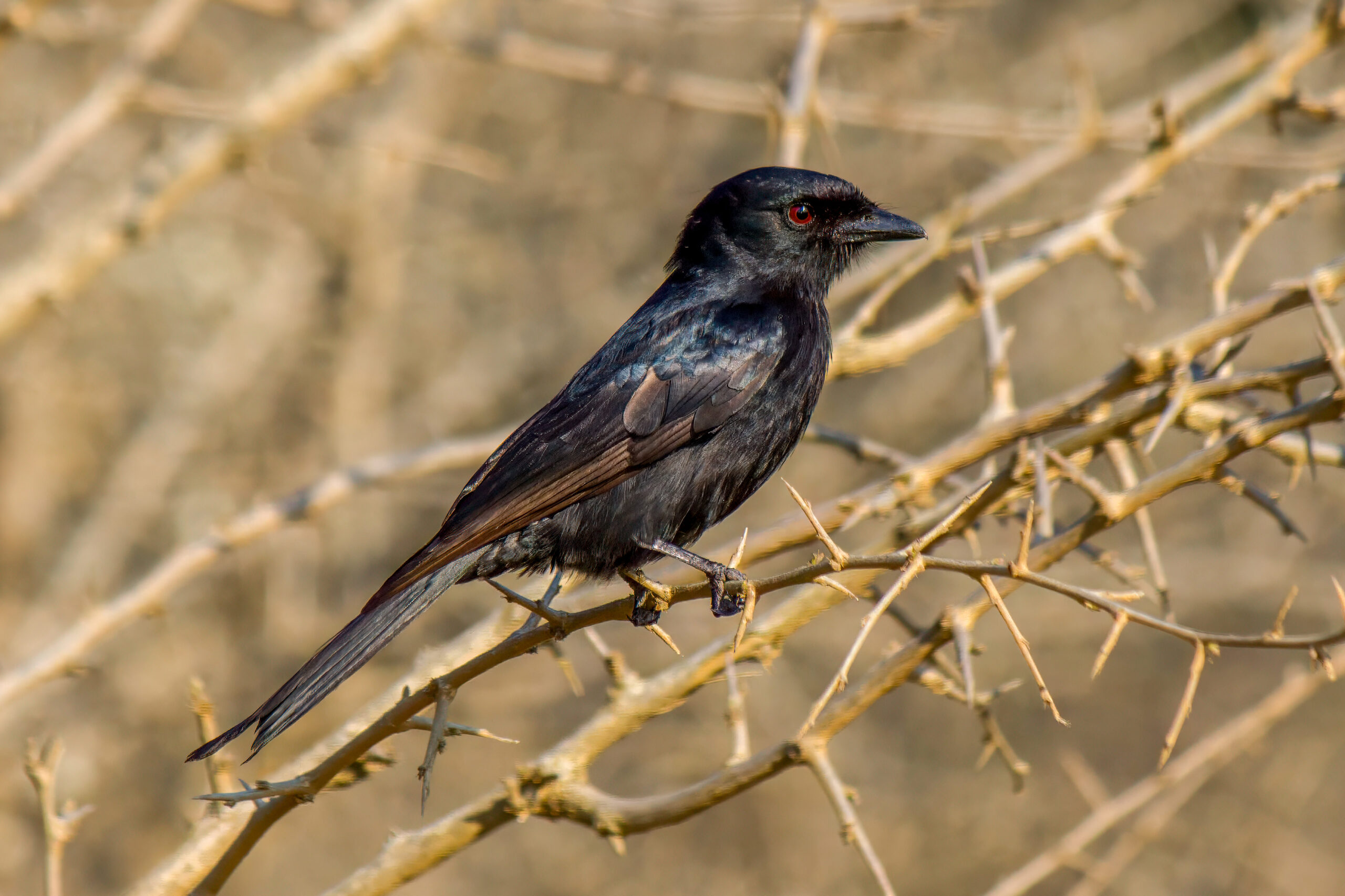Description
The white-bellied drongo (Dicrurus caerulescens) is a small to medium-sized passerine bird found predominantly in South Asia, ranging from India and Sri Lanka to parts of Nepal. It measures approximately 23–25 cm (9–10 inches) in length, including its long, slightly forked tail. This species is characterized by its glossy black plumage, with a white belly that contrasts sharply with the rest of its body. The eyes are deep dark red, and the beak is sturdy and slightly hooked, adapted for its insectivorous diet. Its white belly should be enough to separate it from other species of drongo, but its smaller size is also a distinguishing factor.
Diet & habitat
White-bellied drongos are highly versatile in their habitat preferences. They are most commonly found in dry deciduous forests but are also seen in agricultural areas, plantations, and near human settlements. Their adaptability to different environments contributes to their widespread presence across their range. These drongos primarily feed on insects. They perch conspicuously before launching into the air to capture flying insects such as bees, butterflies, and dragonflies. In addition to insects, they are also known to consume small fruits and occasionally nectar, showing some degree of dietary flexibility.
Nesting
The breeding season of the white-bellied drongo varies across its range but generally occurs from March to June. These birds are monogamous, with both male and female participating in nest building, incubation, and feeding the young. The nest is a small, cup-shaped structure made from twigs, grass, and other plant fibers, usually located high in the fork of a tree branch. The female typically lays 2–3 eggs, which are pale with reddish-brown spots. Incubation lasts about 14–16 days, primarily undertaken by the female while the male guards the nest and provides food. The fledglings leave the nest about 16–18 days after hatching but remain dependent on their parents for several weeks as they learn to forage and fly.
The white-bellied drongo is known for its bold and aggressive behavior during breeding season, and is often seen fearlessly attacking larger birds, including raptors, to defend its territory or protect its nest. This behavior has earned it a reputation as a fearless bird.
Status
The white-bellied drongo is listed as a species of least concern by the IUCN Red List, indicating that it is not currently at risk of extinction. Its wide distribution and adaptability to various habitats have contributed to its stable population. However, like many other species, it could be susceptible to threats such as habitat destruction and pesticide use, which could impact its food sources.







